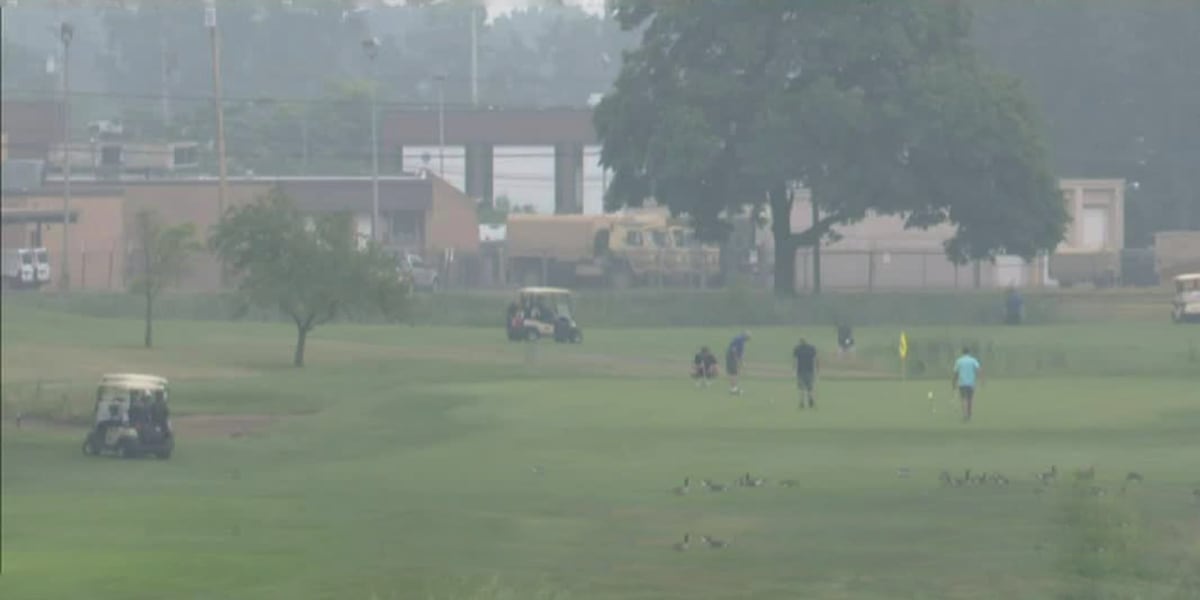New types of air quality warnings for the state of Michigan
New types of air quality warnings for the state of Michigan WILX


LANSING, Mich. Air Quality Alerts and Advisories

Introduction
Last summer, the hazy skies over Mid-Michigan were a result of wildfire smoke, leading to “Air Quality Action Day” alerts. These alerts were particularly dangerous for individuals with breathing problems and other health issues.
Changes in Air Quality Alerts
Last summer’s experience prompted changes in how air quality alerts are labeled. The state of Michigan now differentiates between days when the smoke only impacts vulnerable groups and days when it impacts everyone.
Alec Kownacki, a Meteorologist in the air quality division of Michigan’s Department of Environment Great Lakes and Energy (EGLE), explains, “So that’s why we kinda figured, we need to have an ‘advisory’ for those who are sensitive to pollutants. Then for the unhealthy and above, or worse, that’s where we’ll come in with an air quality ‘alert’, just to let people know that ‘this is exceptionally bad. It’s very broad, and affects even the healthiest of people.”
Focus on Sustainable Development Goals (SDGs)
After last summer, EGLE realized the need to change its messaging regarding wildfire smoke. Working with the state’s health department, it now has two separate alerts paired with separate lists of action steps. This approach aligns with the Sustainable Development Goals (SDGs) by prioritizing the safety and well-being of Michiganders.
Alec Kownacki states, “These advisories and alerts just allow us to be more specific and hone in on specific populations that are going to be more impacted.”
Learning Experience for Meteorologists
News 10 meteorologists also learned from last summer’s experience. Colton Cichoracki, a First Alert Meteorologist at News 10, believes that the new alerts will help the public understand the specific threats and take necessary precautions.
Preparedness for Future Wildfire Smoke
Since the smoke last year was severe across the entire state for many consecutive days, experts have adjusted and are prepared in case it happens again. Colton Cichoracki mentions, “Whether or not we stay very dry to see those wildfires is still yet to be determined. I wouldn’t be surprised if we see a little bit, at least some of the wildfire smoke return, but again it all depends on what’s happening to our west and to our north like we saw last year.”
Protecting Vulnerable Populations
People with existing respiratory conditions are most likely to be impacted by wildfire smoke. When the new alerts are issued, pregnant women, people with heart disease, and outdoor workers are also encouraged to limit their exposure to unhealthy air.
Stay Informed with First Alert Weather App
To stay updated on wildfire smoke movement, you can download the first alert weather app. News 10 meteorologists will be tracking the smoke and will notify you if there is an impact on your health by declaring a first alert weather day.
Subscribe and Connect
Subscribe to our News 10 newsletter and YouTube page to receive the latest local news and weather. Looking to hire people or grow your business through advertising? Gray Digital Media is your one-stop marketing solution. Learn more.
Copyright
Copyright 2024 WILX. All rights reserved.
SDGs, Targets, and Indicators
-
SDG 3: Good Health and Well-being
- Target 3.9: By 2030, substantially reduce the number of deaths and illnesses from hazardous chemicals and air, water, and soil pollution and contamination.
- Indicator 3.9.1: Mortality rate attributed to household and ambient air pollution.
- Indicator 3.9.2: Mortality rate attributed to unsafe water, unsafe sanitation, and lack of hygiene.
-
SDG 11: Sustainable Cities and Communities
- Target 11.6: By 2030, reduce the adverse per capita environmental impact of cities, including by paying special attention to air quality and municipal and other waste management.
- Indicator 11.6.2: Annual mean levels of fine particulate matter (e.g., PM2.5 and PM10) in cities (population-weighted).
The article addresses two Sustainable Development Goals (SDGs) and their corresponding targets:
1. SDG 3: Good Health and Well-being
The article discusses the impact of wildfire smoke on air quality, which can lead to health issues for vulnerable groups, such as those with respiratory conditions, pregnant women, people with heart disease, and outdoor workers. This aligns with SDG 3, which aims to ensure good health and well-being for all.
Target 3.9: By 2030, substantially reduce the number of deaths and illnesses from hazardous chemicals and air, water, and soil pollution and contamination.
The article highlights the need to address air pollution caused by wildfire smoke, which can be hazardous to people’s health. This target specifically addresses reducing deaths and illnesses from air pollution.
- Indicator 3.9.1: Mortality rate attributed to household and ambient air pollution.
- Indicator 3.9.2: Mortality rate attributed to unsafe water, unsafe sanitation, and lack of hygiene.
While the article does not provide specific data on mortality rates, it emphasizes the importance of addressing air quality to protect public health.
2. SDG 11: Sustainable Cities and Communities
The article discusses the impact of wildfire smoke on air quality in cities, highlighting the need to pay attention to air quality in urban areas. This aligns with SDG 11, which aims to make cities and human settlements inclusive, safe, resilient, and sustainable.
Target 11.6: By 2030, reduce the adverse per capita environmental impact of cities, including by paying special attention to air quality and municipal and other waste management.
The article emphasizes the importance of addressing air quality in cities and reducing the adverse environmental impact caused by wildfire smoke. This target specifically focuses on improving air quality in urban areas.
- Indicator 11.6.2: Annual mean levels of fine particulate matter (e.g., PM2.5 and PM10) in cities (population-weighted).
The article does not mention specific data on fine particulate matter levels in cities, but it highlights the need to monitor and address air pollution in urban areas.
SDGs, Targets, and Indicators
| SDGs | Targets | Indicators |
|---|---|---|
| SDG 3: Good Health and Well-being | Target 3.9: By 2030, substantially reduce the number of deaths and illnesses from hazardous chemicals and air, water, and soil pollution and contamination. |
|
| SDG 11: Sustainable Cities and Communities | Target 11.6: By 2030, reduce the adverse per capita environmental impact of cities, including by paying special attention to air quality and municipal and other waste management. |
|
Copyright: Dive into this article, curated with care by SDG Investors Inc. Our advanced AI technology searches through vast amounts of data to spotlight how we are all moving forward with the Sustainable Development Goals. While we own the rights to this content, we invite you to share it to help spread knowledge and spark action on the SDGs.
Fuente: wilx.com

Join us, as fellow seekers of change, on a transformative journey at https://sdgtalks.ai/welcome, where you can become a member and actively contribute to shaping a brighter future.







